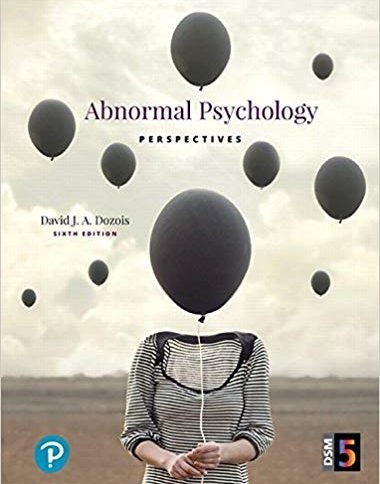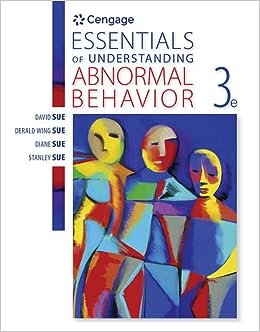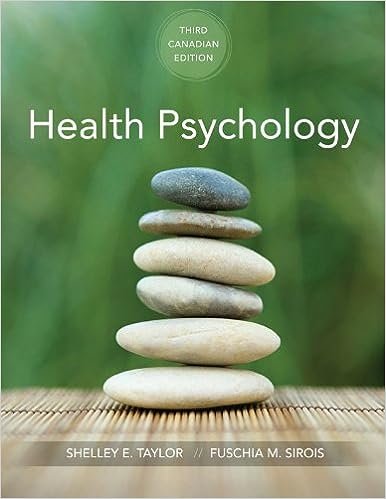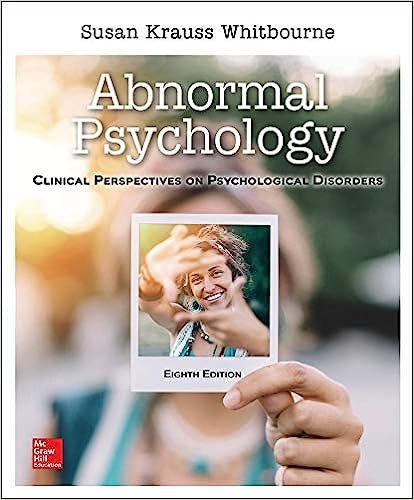Test Bank For Abnormal Psychology Leading Researcher perspectives 4th Edition by Rieger
Chapter 04 Test Bank
- Which of the following is not a major symptom cluster in the definition of posttraumatic stress disorder?
- arousal symptoms
- avoidance symptoms
- substance abuse symptoms
- re-experiencing symptoms
- All of the given options are correct.
Blooms: Analysis
Difficulty: Easy
Learning Objective: 4.1 Describe the current diagnostic criteria for posttraumatic stress disorder (PTSD).
Topic: Trauma- and Stressor-Related Disorders
- Biological, learning and cognitive models of posttraumatic stress disorder (PTSD) all recognise that:
- PTSD is maintained by avoidance of reminders of the trauma.
- PTSD develops in almost everyone who experiences a trauma.
- PTSD is more common in men than in women.
- PTSD is a fear-conditioned response.
- None of the given options is correct.
Blooms: Analysis
Difficulty: Medium
Learning Objective: 4.3 Compare the different models accounting for the development of PTSD.
Topic: Trauma- and Stressor-Related Disorders
- For posttraumatic stress disorder, the treatment with the best long-term outcome according to randomised controlled trials is:
- stress management.
- imaginal exposure.
- hypnotherapy.
- supportive counselling.
- prolonged exposure.
Blooms: Evaluation
Difficulty: Hard
Learning Objective: 4.4 Understand the components of effective treatments for PTSD and the current challenges in the treatment of PTSD.
Topic: Trauma- and Stressor-Related Disorders
- Which of the following is not a core feature of posttraumatic stress disorder?
- prolonged signs of grief
- avoidance of stimuli related to the trauma
- symptoms of re-experiencing the trauma
- increased arousal
- exaggerated startle response
Blooms: Analysis
Difficulty: Easy
Learning Objective: 4.1 Describe the current diagnostic criteria for posttraumatic stress disorder (PTSD).
Topic: Trauma- and Stressor-Related Disorders
- Which of the following is a change to the PTSD diagnosis in the DSM-5?
- Acute stress disorder was added to the DSM-5.
- The diagnosis of PTSD could be made following events that caused shock but were not life threatening.
- The cluster group involving negative alterations in cognitions and mood was removed.
- The term ‘traumatic stress’ was extended to include reactions such as guilt, anger and shame.
- All of the given options are correct.
Blooms: Knowledge
Difficulty: Hard
Learning Objective: 4.1 Describe the current diagnostic criteria for posttraumatic stress disorder (PTSD).
Topic: Trauma- and Stressor-Related Disorders
- Which of the following is not a risk factor for developing PTSD after exposure to a trauma?
- a history of psychological problems pre-dating the trauma
- male gender
- ongoing stressors after the trauma
- low social support after the trauma
- more severe trauma
Blooms: Analysis
Difficulty: Hard
Learning Objective: 4.2 Identify the prevalence of PTSD and the course of posttraumatic stress responses.
Topic: Trauma- and Stressor-Related Disorders
- Which of the following options is not an example of a re-experiencing symptom of PTSD?
- intrusive memories
- flashbacks
- nightmares
- avoidance
- reliving the event
Blooms: Knowledge
Difficulty: Medium
Learning Objective: 4.1 Describe the current diagnostic criteria for posttraumatic stress disorder (PTSD).
Topic: Trauma- and Stressor-Related Disorders











Reviews
There are no reviews yet.